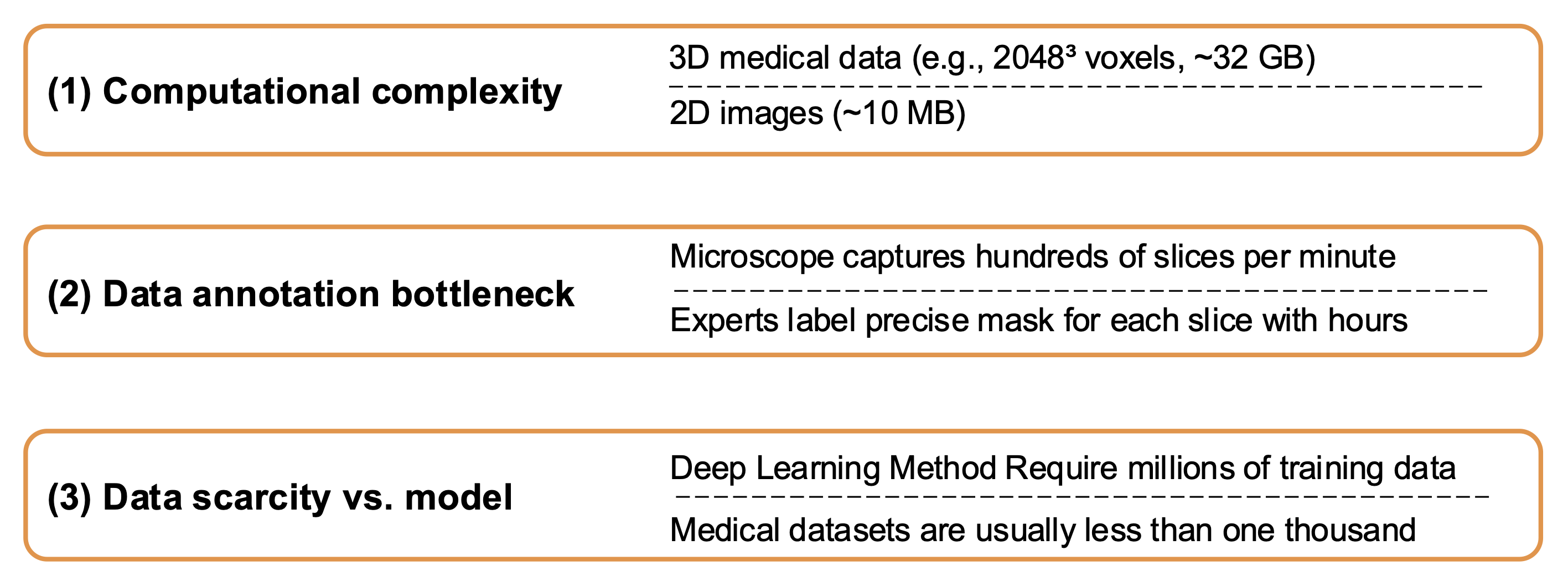This research is supported by NSF IIS-2525840 and NIH 1RF1MH133764-01.
Project Overview and Scientific Goals
Understanding how external stimuli influence neural activity remains a major challenge in modern neuroscience. Trillions of interconnected neurons form the foundation of human cognition and responses. Advances in microscopy allow detailed observation of single-neuron morphology, but the sheer number and complex distribution of neurons make it difficult to identify which neurons are influenced by specific external conditions. This limitation hinders deeper insights into brain function and the precise mapping of neural circuits
Bridging the gap between macroscopic brain activity and microscopic neural responses requires a scalable, high-resolution segmentation framework to isolate and track neuron activity under specific stimuli. Although medical imaging techniques have been improved, challenges remain in terms of computational complexity, data annotation bottlenecks, and data scarcity:

To address these challenges, we propose A Unified Framework for Unsupervised Sparse-to-Dense Brain Image Generation and Neural Circuit Reconstruction. The framework consists of three key stages: (1) a Generative Model to expand datasets by synthesising large number of neuron images with labels, (2) a Segmentation Model to identify neurons and create coarse segmentation masks, and (3) an Interactive Platform to enhance segmentation quality through expert feedback, rapidly producing accurate labels and improving the segmentation model through continuous learning.

Our unified framework has demonstrated its effectiveness in synthesizing large datasets from sparse inputs, enabling accurate segmentation on unseen data with varying features. This approach facilitates both the generation of brain images and the segmentation of neurons. Scaling this framework to high-resolution data using Polaris's computational power will enable deeper insights into neural activity and brain function.